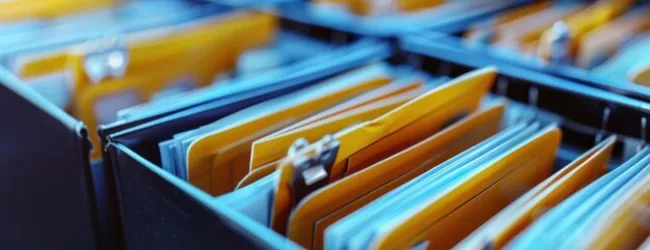Table of contents
- Why is File Manufacturing Business Relatively Easy to Start?
- Here’s How You Can Start Your Profitable File Manufacturing Business
- 1. Strategic Market Analysis & Business Foundation for File Manufacturing Business
- 2. Material Mastery: Sourcing Quality & Cost-Effective Resources
- 3. Workshop Wisdom: Setting Up an Efficient Production Hub
- 4. Crafting Excellence: Streamlining the Manufacturing Process
- 5. Market Penetration: Strategic Sales and Distribution Channels
- 6. Growth and Expansion: Scaling Your Production Empire
- Need Expert Guidance?
- Conclusion
- Frequently Asked Questions (FAQs)
The world of paper and organization offers a surprisingly stable and profitable business avenue: file manufacturing. In India, with its expanding educational sector, bustling offices, and increasing governmental record-keeping, the demand for well-made files remains robust. This guide will provide a comprehensive roadmap to initiating and scaling your file production venture, ensuring you navigate the market with confidence.
Why is File Manufacturing Business Relatively Easy to Start?

- Lower Initial Investment: Compared to industries requiring heavy machinery or complex technology, the initial investment for file manufacturing can be relatively modest, particularly if you start with basic machinery and scale up gradually.
- Simple Skill Requirements: While precision and quality control are essential, the core manufacturing processes (cutting, folding, binding) are relatively straightforward and can be learned quickly.
- Readily Available Raw Materials: Paper and cardboard are widely available from various suppliers, reducing procurement complexities.
- Scalable Operations: You can begin with a small-scale operation and expand as demand grows, allowing for flexible growth.
Here’s How You Can Start Your Profitable File Manufacturing Business
1. Strategic Market Analysis & Business Foundation for File Manufacturing Business
- Understanding the Niche:
- Beyond basic folders, explore specialized niches: archival files for libraries, customized project files for engineering firms, or weather-resistant files for field work.
- Analyze regional preferences: certain areas might favor specific file types or colors.
- Example: In cities like Pune, with its numerous educational institutions, specialized project files for engineering students and research papers have high demand.
- Crafting a Detailed Business Plan:
- Include a thorough financial projection, factoring in potential fluctuations in raw material costs.
- Develop a contingency plan for unexpected market shifts or supply chain disruptions.
- Establish a clear brand identity, including a logo and consistent visual elements.
- Tip: Incorporate local data on industry growth and regional economic indicators.
- Navigating the Legal Landscape:
- Explore government schemes and subsidies available for small-scale manufacturing units.
- Understand the specific regulations regarding waste disposal and environmental compliance.
- Secure necessary certifications for quality and safety standards.
2. Material Mastery: Sourcing Quality & Cost-Effective Resources

- Strategic Procurement:
- Establish long-term relationships with paper mills and cardboard suppliers to secure consistent quality and pricing.
- Explore eco-friendly alternatives like jute-based or recycled materials to cater to environmentally conscious consumers.
- Note: Research and identify local sustainable resources to reduce your carbon footprint, and appeal to the growing green consumer base.
- Binding Component Selection:
- Source durable and rust-resistant metal components from reputable manufacturers.
- Consider offering customizable binding options to cater to specific client needs.
- Tip: Test the durability of all materials before incorporating them into your production.
- Packaging Solutions:
- Design packaging that is both functional and visually appealing, reflecting your brand identity.
- Explore biodegradable or reusable packaging options to minimize environmental impact.
3. Workshop Wisdom: Setting Up an Efficient Production Hub
- Optimized Space Planning:
- Design a modular layout that allows for future expansion and adjustments.
- Implement a lean manufacturing system to minimize waste and maximize efficiency.
- Example: Utilizing a U-shaped layout can reduce the distance materials and products need to travel.
- Machinery Investment:
- Invest in versatile machinery that can handle various file sizes and designs.
- Establish a maintenance schedule to ensure optimal machine performance and longevity.
- Tip: Research and compare machinery from local and international manufacturers.
- Safety Protocols:
- Implement comprehensive safety training programs for all workers.
- Install adequate fire suppression systems and emergency exits.
- Ensure compliance with all local labor laws and safety regulations.
💡 Pro Tip: If you want to start a Manufacturing Business but have too many doubts, connect with a Manufacturing Business expert from Boss Wallah for guidance – https://bw1.in/1116
4. Crafting Excellence: Streamlining the Manufacturing Process

- Precision Cutting and Folding:
- Utilize computer-aided design (CAD) software to create precise cutting templates.
- Implement quality control checkpoints at each stage of the production process.
- Durable Binding and Assembly:
- Employ skilled workers for meticulous binding and assembly.
- Use automated binding machines for high-volume production.
- Customization and Finishing:
- Offer printing and labeling services to personalize files for clients.
- Explore finishing techniques like lamination or embossing to enhance product appeal.
- Rigorous Quality Assurance:
- Establish a comprehensive quality control system to identify and address defects.
- Conduct regular product testing to ensure durability and functionality.
ALSO READ | Start an Online Marketing Home based Business : Step-by-Step Guide for 2025
5. Market Penetration: Strategic Sales and Distribution Channels
- Digital Marketing Strategies:
- Develop a user-friendly e-commerce website with detailed product descriptions and high-quality images.
- Utilize search engine optimization (SEO) techniques to improve online visibility.
- Engage in targeted social media marketing campaigns.
- Offline Sales and Networking:
- Participate in industry trade shows and exhibitions.
- Build relationships with local retailers and distributors.
- Example: Attend educational trade shows to showcase your products to school and college administrators.
- Strategic Partnerships:
- Collaborate with office supply stores and stationery wholesalers.
- Establish partnerships with corporate clients for bulk orders.
- Customer Relationship Management (CRM):
- Implement a CRM system to manage customer interactions and track sales.
- Gather customer feedback to improve products and services.
6. Growth and Expansion: Scaling Your Production Empire
- Capacity Expansion:
- Invest in additional machinery and expand your production facility to meet increasing demand.
- Explore automation options to increase efficiency and reduce labor costs.
- Product Diversification:
- Introduce new file designs, sizes, and materials to cater to diverse customer needs.
- Develop complementary products like document organizers or storage boxes.
- Export Ventures:
- Explore opportunities to export your products to neighboring countries in South Asia.
- Research international trade regulations and requirements.
- Sustainable Practices:
- Adopt environmentally friendly production methods and materials.
- Obtain eco-certifications to appeal to environmentally conscious consumers.
Need Expert Guidance?
Starting a business can be challenging, but you don’t have to do it alone! At Boss Wallah, our 2,000+ business experts are ready to provide valuable insights and guidance. Whether you need help with marketing, finance, sourcing, or any other area of any business, our business experts are here to help you succeed- https://bw1.in/1116
Confused about Which Business to Start?
Want to start your own business but unsure which one to choose? Explore Boss Wallah, where you’ll find 500+ courses by successful business owners, featuring practical, step-by-step guides on starting and growing various businesses. Find your perfect business idea today – https://bw1.in/1111
Conclusion
A thriving file manufacturing business in India is achievable with meticulous planning, quality production, and strategic marketing. By focusing on innovation, sustainability, and customer satisfaction, you can establish a strong foothold in this competitive market.
Frequently Asked Questions (FAQs)
- What is the initial investment required for a file manufacturing business?
- The initial investment can vary, but it typically ranges from ₹2 lakhs to ₹10 lakhs, depending on the scale of operation and machinery.
- What are the essential raw materials required?
- Paper, cardboard, metal clips, rings, and packaging materials.
- What machinery is needed for file manufacturing?
- Paper cutting machines, folding machines, binding machines, and printing machines.
- How can I market my file products effectively?
- Online marketing, offline marketing, and establishing distribution channels.
- What are the legal requirements for starting this business in India?
- Business registration, licenses, permits, and GST registration.
- Is there a good market for file manufacturing in India?
- Yes, the demand is consistently high due to the education sector and government institutions.
- What are the key factors for success in this business?
- Quality products, competitive pricing, and effective marketing.
- How can I find reliable suppliers for raw materials?
- Local paper mills, industrial suppliers, and online marketplaces.


